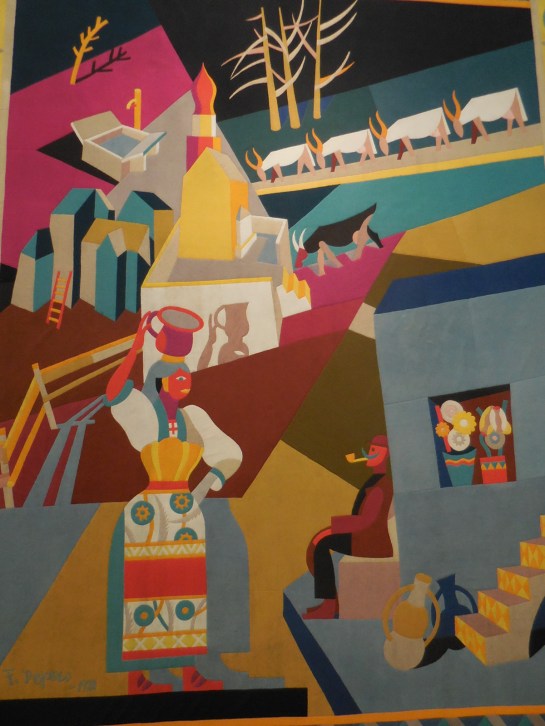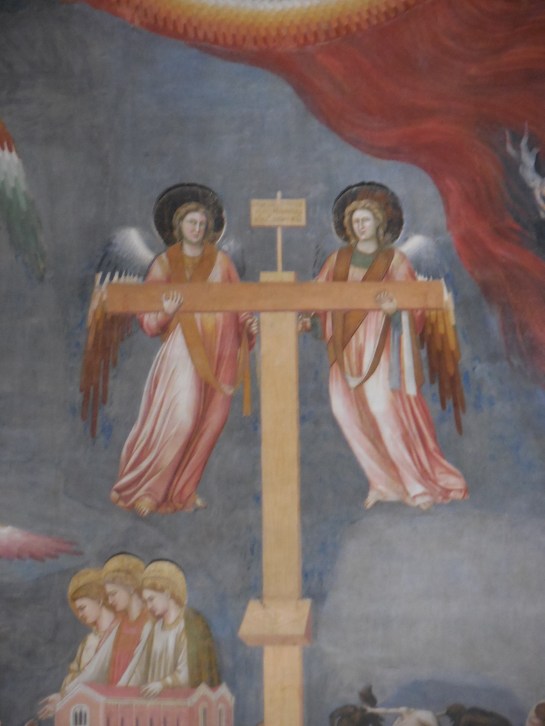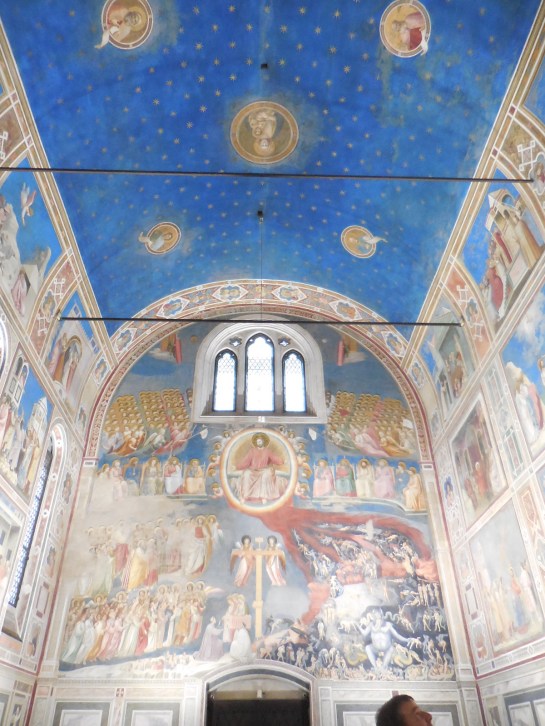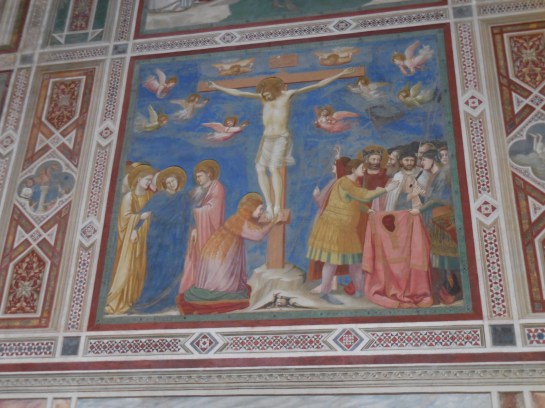

It was the perfect way to spend the last day of my trip to the Veneto region. I had travelled with arsviva travel agency to Vicenza for an art exhibition and to Padua for some sightseeing. The town of Rovereto, below the Dolomites and near Lake Garda, was even more enthralling than the Palladian villas I had seen. The narrow, picturesque streets and quaint squares gave the place a romantic flair. The town had a distinctive poetic quality. I loved the cafes, where I could have sat all day while sipping cappuccinos and eating paninis. There was a lot to see, and, unfortunately, we only had a few hours before the long bus trip back to Prague.
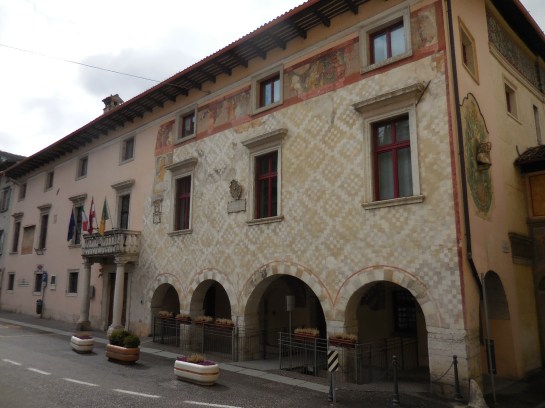

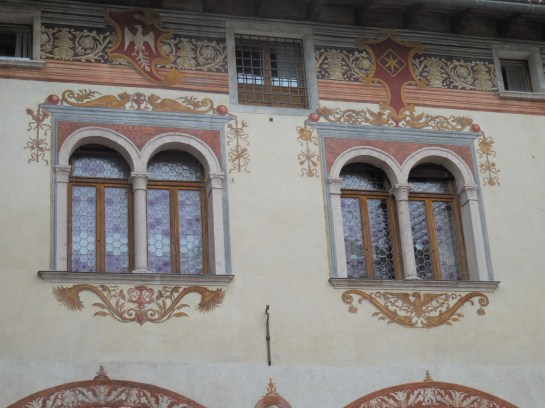

The facades of the buildings caught my undivided attention. I especially liked the floral motifs on the façade of the Palazzo Del Ben-Conti d’Arco behind a fountain on one of the main squares. Other facades showed religious decoration. The town had made a name for itself in history, too. Prominent personalities had set foot in Rovereto, especially during the 18th century. Goethe had visited in 1786, Pope Pius VI in 1782. Mozart gave his first concert in Italy there during 1769. Indeed, I could almost hear Mozart’s lively music as I meandered along the charming streets.
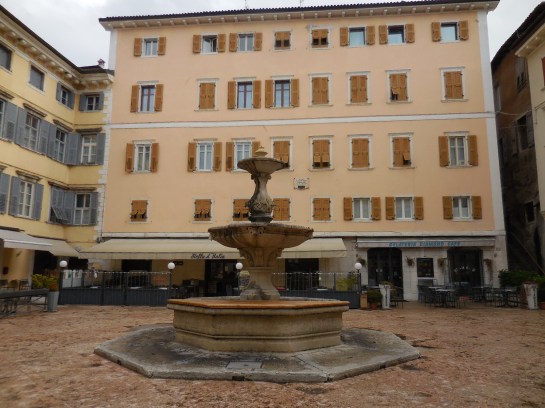

There’s more. The Public Library holds the distinction of being the location of the longest nonstop reading session ever – 53 hours long. There are intriguing churches while a castle housing a military museum looms above the town. The Bell of the Fallen is the largest bell in the world, made of bronze of cannons from all countries that saw action in World War I.


When we came to the Depero Futurist House of Art (Casa d’Arte Futurista Depero), I took one look at the building and knew I had to go inside. Elements of modern architecture somehow accented the medieval character of the structure. The building reminded me of the House of the Stone Bell (Dům U kammeného zvonu) in Prague, an exhibition space in a medieval building that is seeping with history. This was the only Futurist museum in Italy, and I wanted to familiarize myself with the movement in which Fortunato Depero (1892-1960) had played a prominent role.
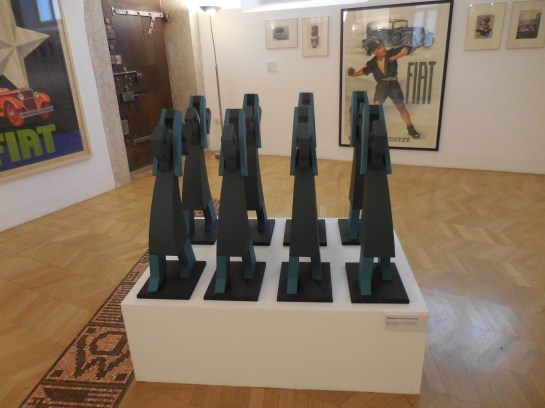

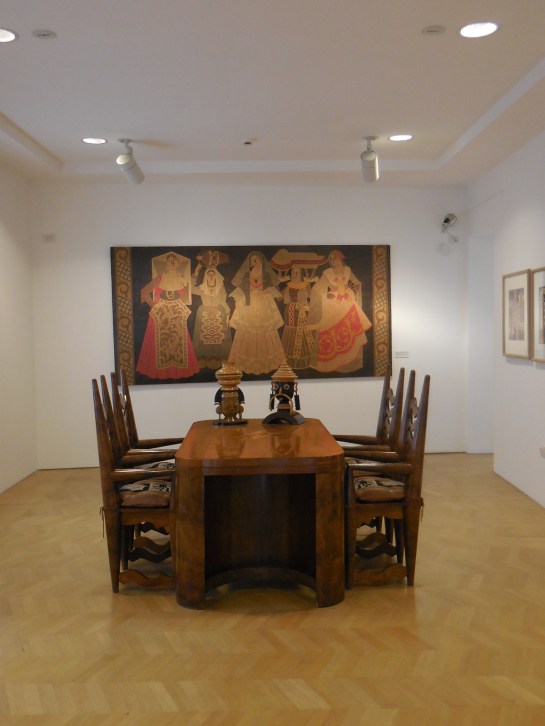

First, I needed some background information about Depero. He grew up in Rovereto, working with marble and creating art, so it was only fitting that in 1919 he chose this town as the location for the museum that would eventually contain as many as 3,000 of his works. Depero made a name for himself as a painter, sculptor, writer and graphic designer. While living in Rome, he wrote a futurist manifesto and created stage sets and costumes. In 1928, he tried his luck in America, settling in New York City, where he designed costumes for the theatre and created covers for magazines. After a stint of several years, he returned to Italy. Depero remained loyal to the futurist movement, even though it was not as well respected in the 1930s and 1940s because many artists working in that style became fascists during those decades. Due to futurism’s negative image, many abandoned the movement. Not Depero. After World War II, he moved back to the USA, residing in Connecticut. In 1949, he returned to his boyhood home of Rovereto, and he would stay there for the remainder of his life. He was ill for two years before passing in 1960 at the age 68.
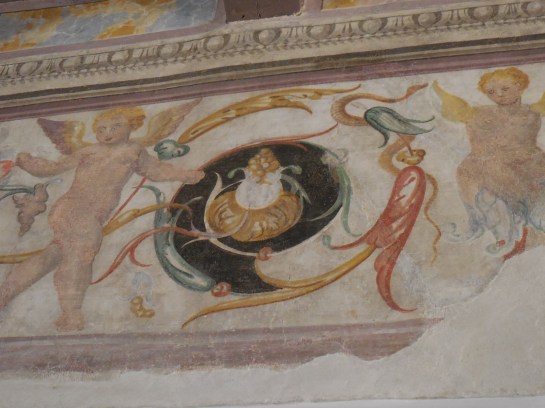
Wall decoration of interior

It wasn’t until I came to the museum that I became familiar with the movement of Futurism, a movement that was born in Italy during the early 20th century. Futurism rejected the past and celebrated modernity and technological advances. Often its artists portrayed urban environments and industrial cities. Cars and airplanes made frequent appearances. Vehicles were shown in motion, not standing still. However, futurists also tended to praise violence and war. Artists of this movement took up diverse fields – painting, sculpture, ceramics, graphic design, theatre, film, literature and others.
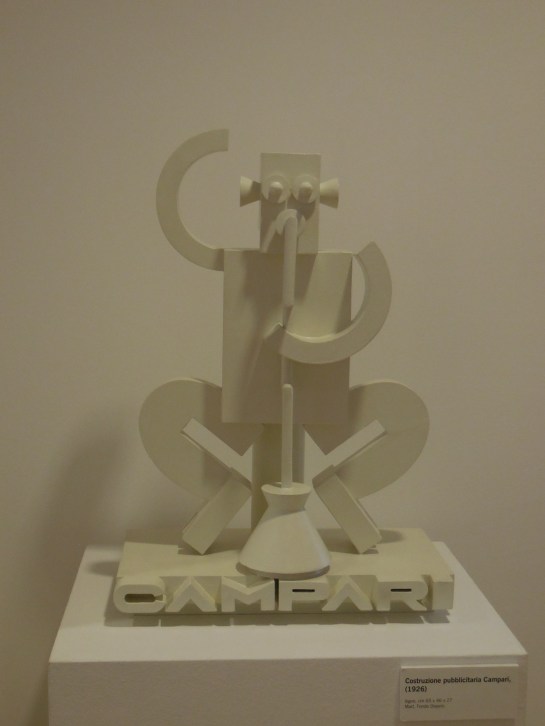
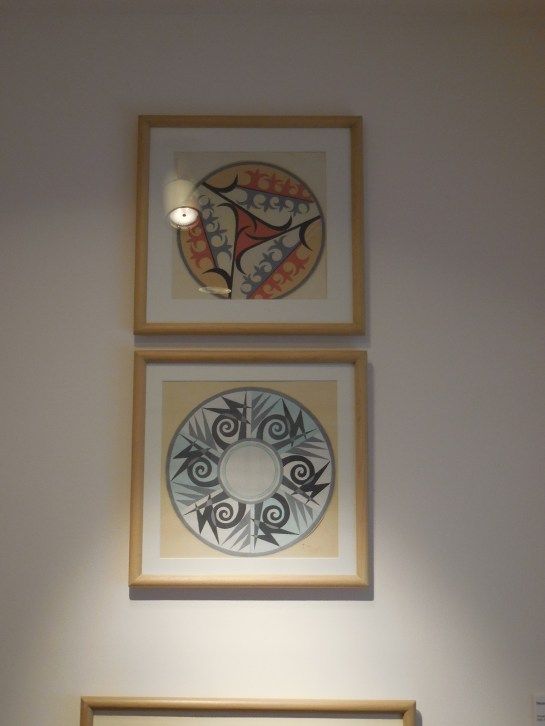
The museum was eclectic with furniture, paintings, tapestries, cloth material, drawings, collages, posters, toys and a film, for instance. I loved the dynamic colors, especially the bright orange of one painting and bright pink hues of others. The works indeed looked as if they were in motion. I could see elements of Cubism in the designs. I especially thought of Josef Čapek’s mechanical figures in his paintings, and I could see characteristics of primitive art, too. I was struck by the way some figures resembled machines. In one sculpture in particular I could see the figures in motion. It was as if the sculpture was not standing still, but, of course, it was.



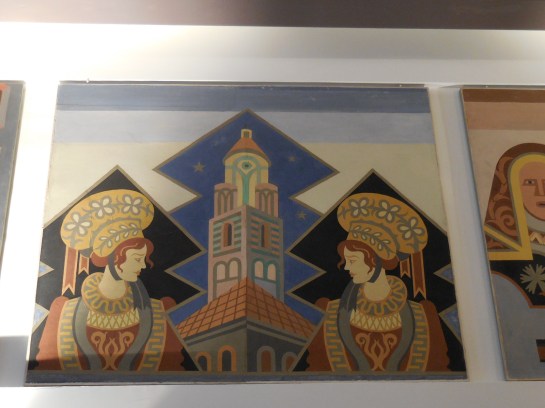
There were tranquil scenes, such as a woman with a pink face holding a pot on her head, having stopped to talk to a figure smoking a pipe. Some of the furniture seemed to have designs resembling folk themes. In some paintings I saw a dangerous, impersonal city, sharp as a sword. It was as if the buildings themselves had swallowed up humanity. Of course, these are just my personal impressions. I do not know if they are the impressions Depero wanted viewers to have.

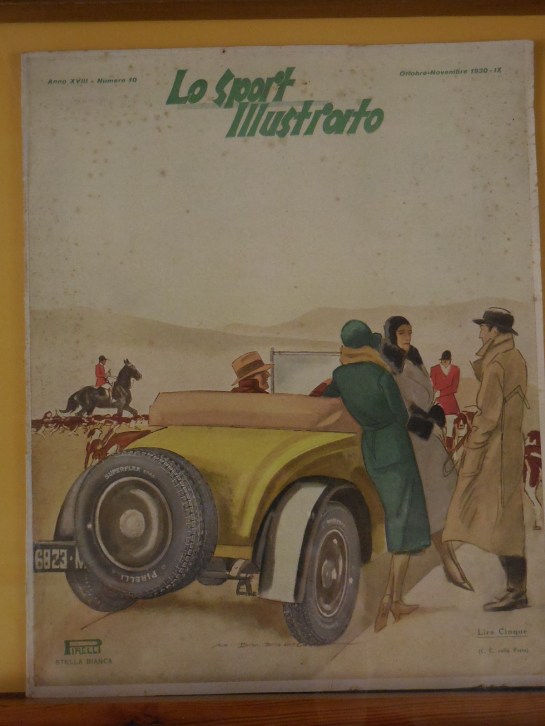

I liked the unique museum because it had both a modern and medieval character architecturally, and the many artifacts introduced me to a movement I had known nothing about. I especially was drawn to the pastel colors of some of the works. I learned about an artist who never gave up on futurism, even when many others had given up on the movement. It was somewhat ironic to have a museum dedicated to art that stressed modernity and despised anything old in a town of rich historical content. It was interesting that Depero chose a medieval building as the place to exhibit his works. The exhibition’s location stressed that the old was fused into the new and vice versa, not that the new rejected the old.
Perhaps the irony was part of the beauty of it all, too.
Tracy A. Burns is a writer, proofreader and editor in Prague.

